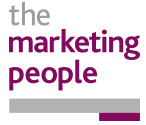
If you would like to sell your products or services online, read our blog below to find out how to set up a successful eCommerce business.
What is eCommerce?
eCommerce allows you to operate your business online, selling your products or services through your website and increasing your revenues.
What makes a successful eCommerce business?
To trade online effectively, there are many things to consider: from customer experience to find and buy, through to the order process, the payment process, related communications to customers, order fulfillment, customer service, delivery and returns. Feedback also plays a crucial role, as customers look for reviews before buying.
Get all the above right, online and over the phone, and you will gain loyal customers and potential referrals.
How do I set up eCommerce?
In order to accept payments online you need three things: an eCommerce platform, a payment gateway and a merchant account.
An eCommerce-enabled website alone does not allow you to run an online business. You still need a way to process payments and collect money, which is where payment gateways and merchant accounts come in.
A payment gateway is a service that acts as a secure link between a company’s website, a customer’s card issuer and the seller’s merchant account.
It’s basically the go-between for all parties, taking the transaction information from the merchant and sending it to the issuer and merchant account. Think of it as the online equivalent of a card terminal.
A merchant account is a special category of bank account that allows businesses to accept payments via debit and credit cards, which you may already have if you take card payments already.
Here are the steps you need to follow to set up your eCommerce business:
1. Website design & development:
First you must develop the eCommerce website, creating a suitable and easy customer experience to find and buy your product(s) and/or services.
Remember, the design, the copy, the layout and the calls to action, along with good product images, all have an impact on how well your online store will attract, engage, convince and convert potential customers.
Trading terms and conditions need to be written and applied for all stages of the online transaction, so buyers are aware of the contract they are to undertake.
SEO needs to be considered at the outset, and will play a huge part in increasing traffic to your website.
2. E-mail setup:
E-mails also need to be set up for the whole process – those to the buyer and those to you from the online transactions.
3. Payment gateway:
You will then integrate your chosen payment gateway i.e. PayPal, Stripe, Worldpay, which will link to your bank account. Make sure that your chosen gateway is applicable to your merchant account at your bank before proceeding.
4. Advertise:
You will need to advertise through Google Ads, YouTube Advertising and Facebook Advertising to drive awareness and customers.
Looking to find a way to operate online to sell your products and services? Or, do you already have an eCommerce website and want to improve its visibility, get more clicks, improve conversion rates and increase sales? Then give us call on 01543 495752 for no obligation chat to see how we can help.













